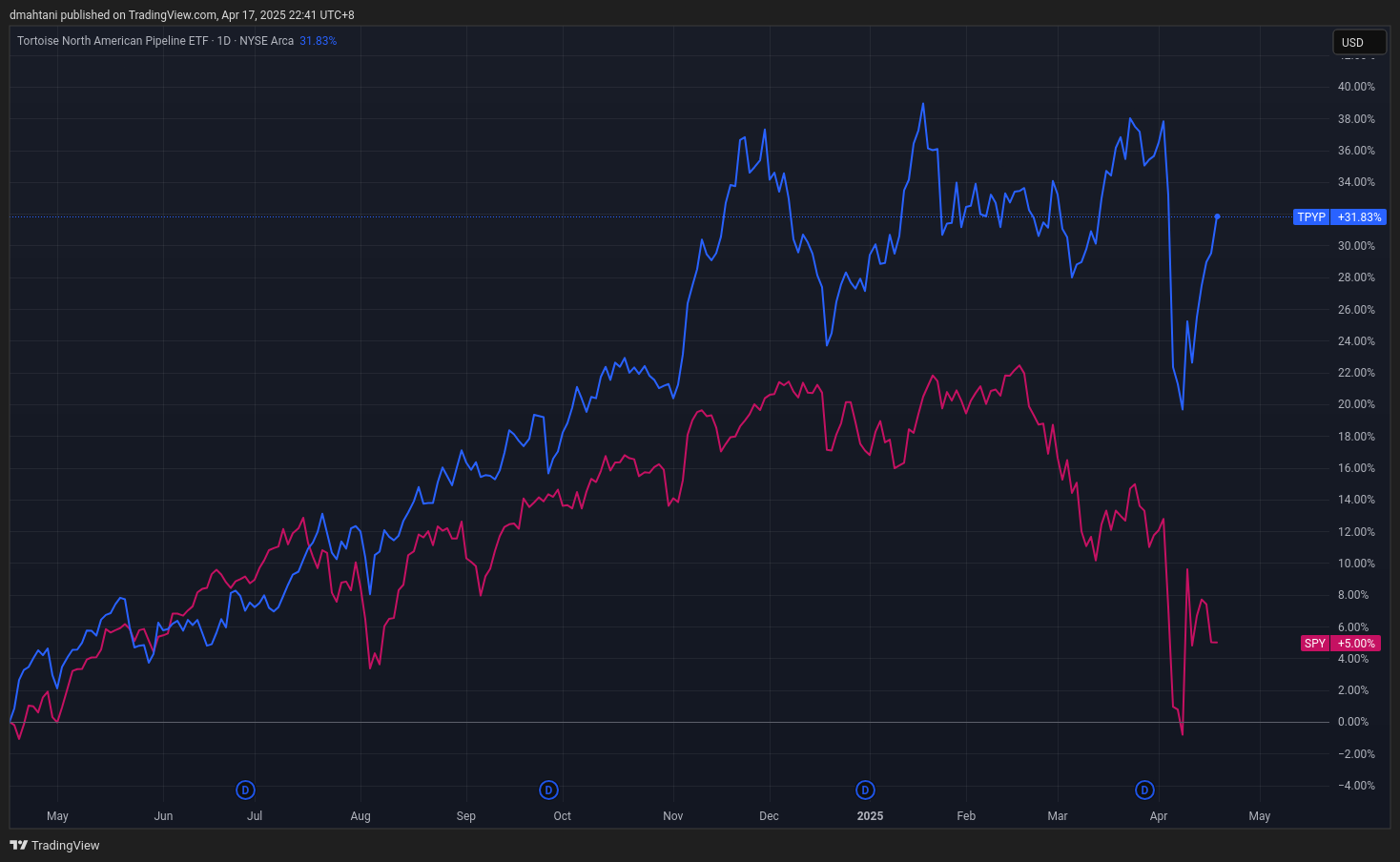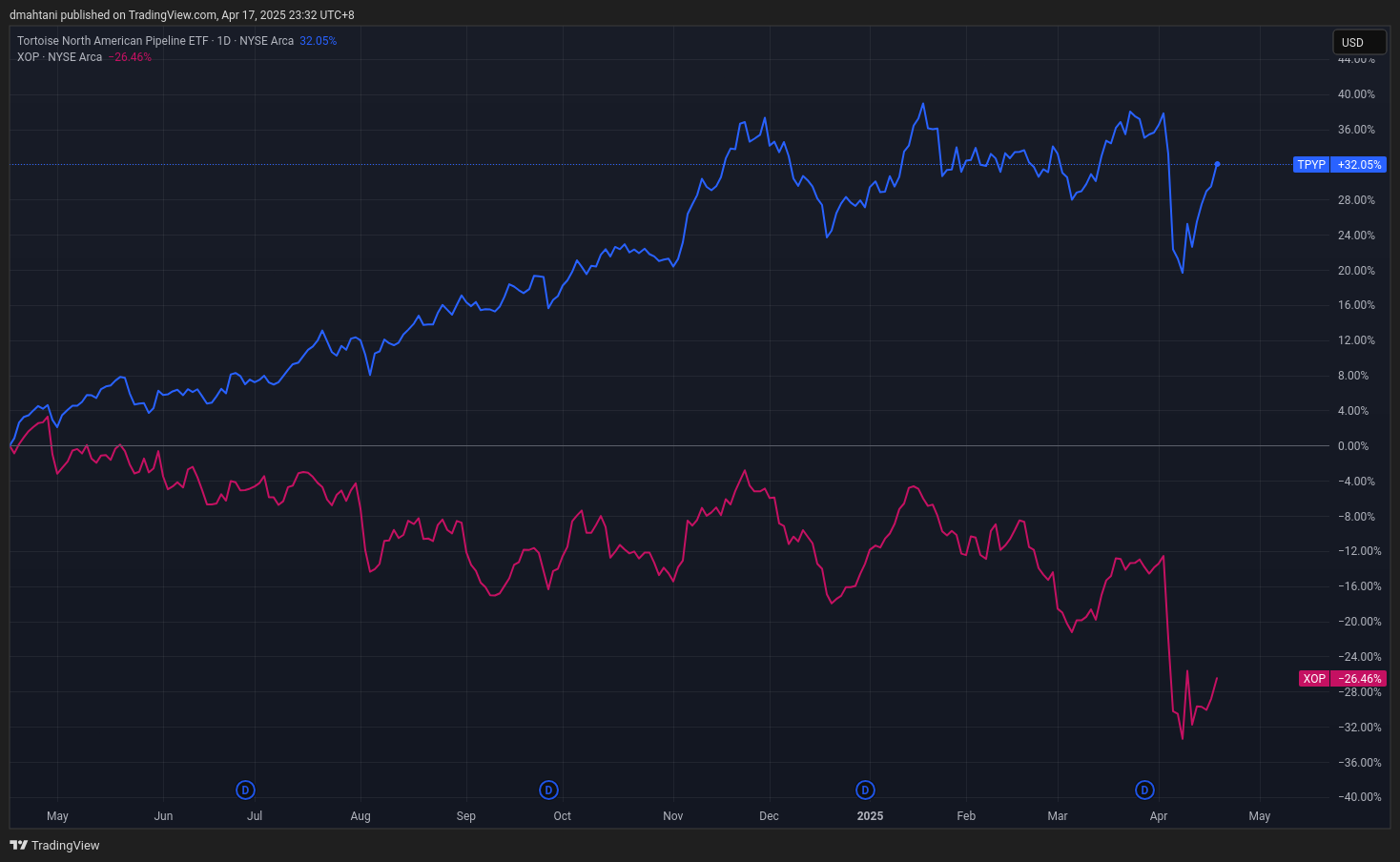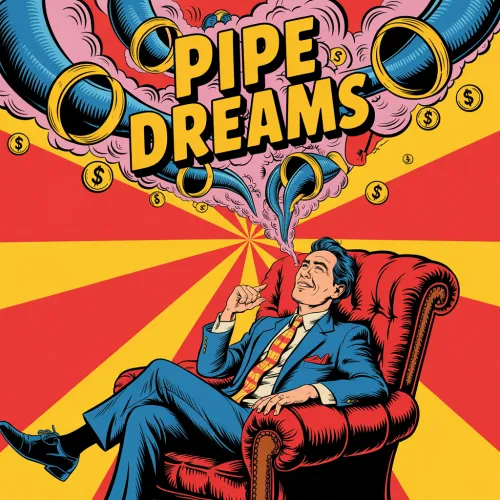Energy investing doesn’t have to mean riding the oil price rollercoaster.
When most people think of investing in energy, they think of two paths:
- Buy the commodity itself — like oil, natural gas, coal, or uranium.
- Buy the producers — like oil drillers, or coal and uranium miners, whether it’s giants like Exxon or smaller exploration firms.
But there’s a third option that many are not aware of: pipelines.
Don’t Trade Oil. Toll It.
Pipeline companies don’t extract or own the oil and gas. They just transport it. Think of them like toll road operators: they get paid a fee every time someone uses their system, no matter what the price of oil is. Whether oil is $60 or $100, the pipeline gets paid the same. That makes them much less volatile than producers, who live and die by commodity prices.
This difference matters. Energy producers are highly sensitive to market swings. When oil prices crash, producer profits can collapse. Pipelines, by contrast, often operate on long-term contracts that provide predictable, fee-based income.
Why Pipelines Make Sense Now
We’re in a weird moment. Oil prices have come down, energy stocks are struggling, and investors are on edge. On top of that, Trump’s tariff threats are constantly resurfacing, which is already shaking up global supply chains and commodity-driven companies.
That’s what makes pipelines so appealing right now:
- Steady cash flows even in choppy markets
- Lower volatility than producers
- Attractive dividends that pay you to wait
- Domestic focus that helps insulate them from tariff disruptions
It’s a way to stay invested in energy without getting whipsawed by every headline.
This setup also makes pipelines particularly interesting as a way to help insulate your portfolio from the potential fallout of any new tariffs. If global supply chains get squeezed again, pipeline operators — who focus on domestic transportation of oil and gas — will likely offer more stability than global commodity or export-reliant firms.
How I’m Playing It
To put this idea to work, I bought TPYP — the Tortoise North American Pipeline Fund. It’s an ETF that holds a basket of North America’s largest and most essential pipeline companies. It gives me exposure to the entire midstream sector in one shot.

It also pays a good dividend (~4%). That combination — rising price and steady income — is exactly what I want when markets get wobbly.

Who This Is For
- If you want energy exposure but hate wild price swings.
- If you’re looking for income in a market that feels uncertain.
- If you want something boring that quietly compounds.
Midstream fits right in that sweet spot.
One More Comparison: Defensive Yield Options
If you’re chasing yield in today’s market, you’ve probably looked at things like utilities, REITs, or even bonds. But each of those comes with tradeoffs.
- Utilities provide stable income but offer limited growth.
- REITs are sensitive to rates and occupancy levels.
- Bonds provide predictability but no upside.
I like what I see with pipelines — equity upside and a good dividend, with the added benefit of being less sensitive to interest rate shocks than REITs and more economically essential than most utilities. For income investors who want more than just yield, pipelines are one of the few plays that can offer both cash flow and capital appreciation.
What Could Go Wrong? 😮
No trade is bulletproof. Here are a few risks:
- If we hit a deep recession, oil and gas volumes could slow down.
- Regulatory shifts (e.g. environmental) could pressure pipeline operators.
- Rising interest rates can make dividend stocks less attractive — though that risk seems to be easing for now.
Still, for where we are in the cycle, the risk-reward looks compelling.
Bottom Line
Most investors miss this angle. You don’t have to go all-in on oil producers or commodity bets to get energy exposure.
Pipelines are the quiet workhorses of the energy world. They don’t make headlines, but they keep getting paid.
And if you’re already exposed to oil producers, ask yourself: who’s getting paid no matter what? It’s not the drillers. It’s the toll collectors — and they’re pumping in profits either way.

